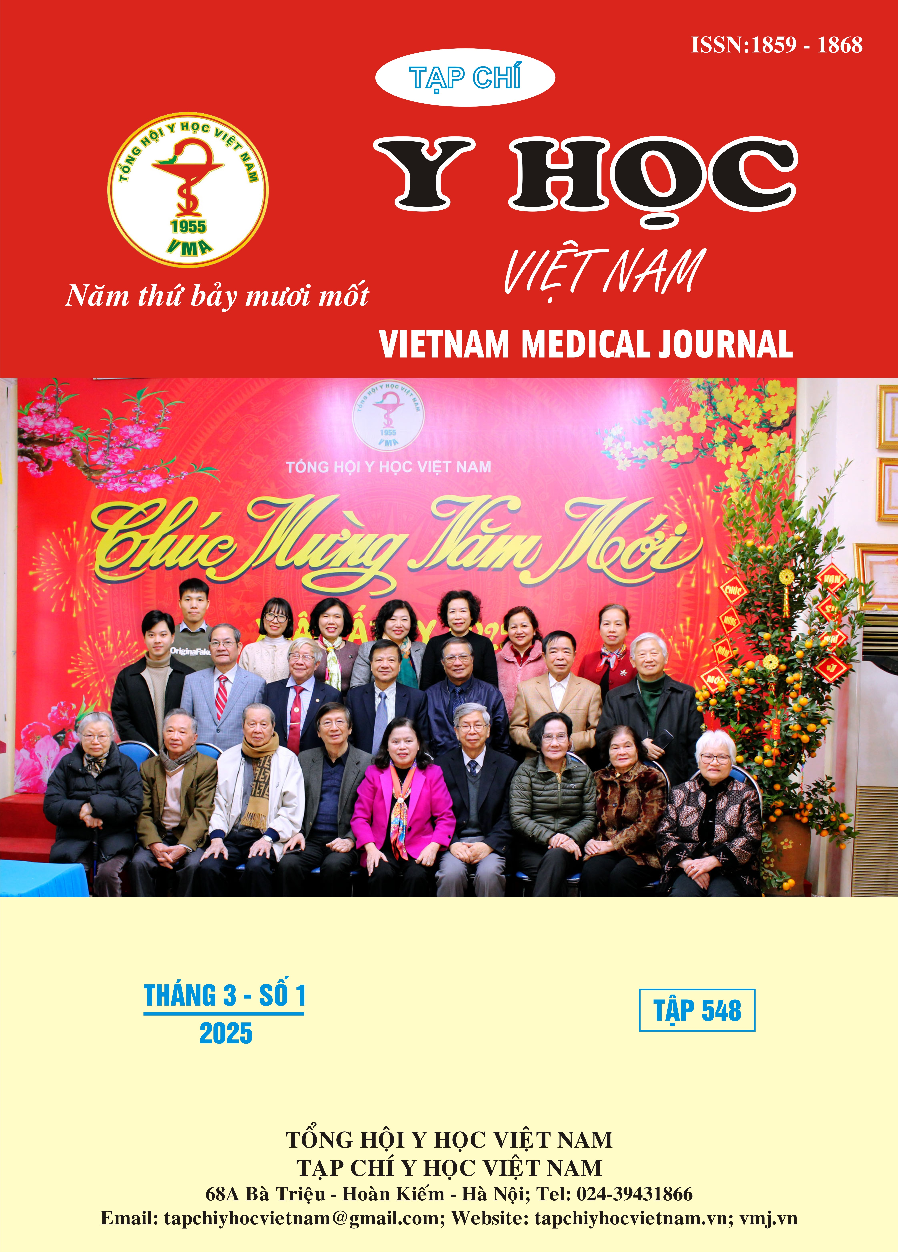RESEARCH ON THE EFFECT OF REHABILITATION ON PATIENTS WITH KNEE OSTEOARTHRITIS OF THE ELECTRO PULSE THERAPY COMBINED WITH THE REMEDY "DOC HOAT TANG KI SINH"
Main Article Content
Abstract
Objective: To evaluate the effect of rehabilitation on patients with knee osteoarthritis of the wind-cold-dampness type with liver and kidney deficiency using electro pulse therapy combined with the remedy "Doc Hoat Tang Ki Sinh". Method: Prospective, open clinical intervention study with control, before-after comparison and comparison with the control group. 60 patients were diagnosed with knee osteoarthritis according to TCM with wind-cold-dampness type with liver and kidney deficiency. Control group: Including 30 patients using the remedy "Doc Hoat Tang Ki Sinh" in decoction form. Research group: Including 30 patients using the remedy "Doc Hoat Tang Ki Sinh" in decoction form combined with electro pulse therapy in the knee joint area. Results: After 20 days of treatment (D20), the average pain score of both groups decreased statistically significantly (p < 0.01). The reduction in performance of the NC group was greater than that of the control group, in which the reduction in performance of the NC group, the difference between the two groups was statistically significant with p < 0.01. The NC group after treatment of knee flexion TVĐ increased compared to before treatment with statistical significance with p < 0.01. After 20 days of treatment, the average heel-buttock index of the two groups improved significantly, the performance decreased after 20 days of treatment, the NC group was higher than the control group with statistical significance with p < 0.05. Conclusion: The method of treating knee osteoarthritis with wind-cold-dampness and kidney deficiency by electric pulse therapy combined with the medicine " Doc Hoat Tang Ki Sinh" gave good clinical results of rehabilitation.
Article Details
Keywords
Thoái hóa khớp gối, điện xung, độc hoạt tang ký sinh
References
2. Deshpande BR, Katz JN, Solomon DH, et al. Number of Persons With Symptomatic Knee Osteoarthritis in the US: Impact of Race and Ethnicity, Age, Sex, and Obesity. 2016;68(12): 1743-50.
3. Nguyễn Vĩnh Ngọc, Trần Ngọc Ân, Nguyễn Thu Hiền. Đánh giá tình hình bệnh khớp tại khoa cơ xương khớp –Bệnh viện Bạch Mai trong 10 năm (1991-2000). Báo cáo khoa học đại hội toàn quốc lần thứ ba, Hội thấp khớp học Việt Nam. 2002:263-267
4. Aletaha D, Smolen JS. Diagnosis and Management of Rheumatoid Arthritis: A Review. JAMA. 2018 Oct;320(13):1360-72.
5. Bộ Y tế. Hướng dẫn chẩn đoán và điều trị bệnh theo y học cổ truyền kết hợp y học cổ truyền với y học hiện đại - Tập 1. Nhà xuất bản Y học. 2020
6. Bộ Y tế. Hướng dẫn quy trình kỹ thuật chuyên ngành Phục hồi chức năng. Nhà xuất bản y học. 2014:124-12
7. Nguyễn Xuân Nghiên và cộng sự. Vật lí trị liệu phục hồi chức năng. Nhà xuất bản y học. 2018:230-233.
8. Ackerman I. Western Ontario and McMaster Universities Osteoarthritis Index (WOMAC). The Australian journal of physiotherapy. 2009;55(3): 213.
9. Bùi Trí Thuật, Trần Thái Hà. Đánh giá tác dụng của phương pháp kết hợp bài tập dương sinh điện châm và bài Độc hoạt ký sinh thang trong điều trị thoái hóa khớp gối. Tạp chí y học Việt Nam. 2022;511(1):180-5.
10. Nguyễn Thị Ngọc Lan. Điều trị thoái hóa khớp - Từ lí thuyết đến thực hành. Tạp chí y học Việt Nam. 2022:3-7.


